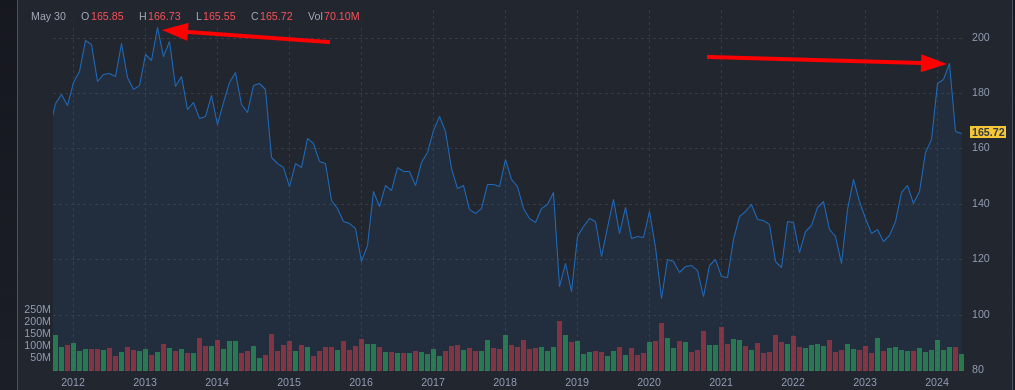
Understanding Return on Investment (ROI) in Business
Return on Investment (ROI) is a crucial metric that businesses use to evaluate the efficiency and profitability of their investments. In simple terms, ROI measures the return on a particular investment relative to the investment’s cost. It is a valuable tool for businesses to assess the performance of their investments and make informed decisions about future resource allocation.
The formula for calculating ROI is straightforward: ROI = (Gain from Investment – Cost of Investment) / Cost of Investment. For example, if a company invests $100,000 in a new project and generates a return of $150,000, the ROI would be ($150,000 – $100,000) / $100,000 = 0.5 or 50%.
The Importance of ROI in Business Decision-Making
The importance of ROI in business decision-making cannot be overstated. It is a compass that guides companies towards the most lucrative investment opportunities. By carefully analyzing the ROI of various projects, businesses can allocate their resources wisely, focusing on initiatives that promise the greatest returns while minimizing the risk of financial setbacks.
A prime example of the pivotal role ROI plays in business decision-making is Amazon‘s investment in its Prime program. In 2005, Amazon introduced Prime, a subscription service offering free two-day shipping and other benefits for an annual fee. Despite initial scepticism, Amazon’s decision to invest heavily in Prime proved to be a game-changer. By 2020, Prime had over 150 million subscribers worldwide, contributing significantly to Amazon’s revenue growth and customer loyalty. Based on its projected ROI, the company’s strategic decision to prioritize this investment has been a key factor in Amazon’s ongoing success.
A survey conducted by the Harvard Business Review further underscores the significance of ROI in shaping business strategies. The survey revealed that an overwhelming 71% of executives consider ROI the most crucial metric when evaluating the success of their investments. This finding emphasizes the central role that ROI plays in guiding decision-making processes across industries.
Another real-world example that highlights the importance of ROI in business decision-making is General Electric (GE). In the early 2000s, GE strategically invested heavily in its digital initiatives, aiming to transform itself into a digital industrial company. However, the company’s failure to accurately assess the ROI of these investments led to disappointing results. By 2018, GE had to scale back its digital ambitions and restructure its operations, demonstrating the consequences of neglecting a thorough ROI analysis in business decision-making.
Understanding what return on investment (ROI) means in business is crucial for large corporations and small and medium-sized enterprises (SMEs). For instance, consider a hypothetical scenario where an SME is contemplating investing in a new piece of equipment to streamline its production process. The company can determine whether the expected benefits, such as increased efficiency and cost savings, justify the initial investment by conducting an ROI analysis. This analysis helps the SME make an informed decision, ensuring the investment aligns with its financial goals and contributes to its long-term growth.
Companies prioritising ROI in decision-making are better positioned to thrive in today’s competitive business landscape. By carefully evaluating the potential returns of each investment opportunity and aligning their strategies accordingly, businesses can optimize their resources, minimize risks, and maximize their chances of success. The Harvard Business Review survey demonstrates that a strong focus on ROI is common among top-performing companies, underlining its importance in driving business growth and profitability.
Factors Influencing ROI in Business
Several factors can impact the ROI of a business investment, including:
1. Market demand: The success of an investment often depends on the market demand for the product or service offered. Suppose there is high demand; the potential for a substantial ROI increases.
2. Competition: The level of market competition can also affect ROI. If many competitors offer similar products or services, achieving a high return on investment may be more challenging.
3. Investment costs: The initial cost of an investment can significantly impact its ROI. Higher upfront costs may require a longer time to generate a positive return.
4. Time horizon: The length of time an investment is held can also influence its ROI. Some investments may provide quick returns, while others may require longer to generate significant profits.
Strategies for Improving ROI in Business
Businesses can employ various strategies to improve their ROI, such as:
1. Conducting thorough market research: By understanding market trends, consumer preferences, and competitor strategies, businesses can make more informed investment decisions and increase their chances of success.
2. Investing in employee training and development: Skilled employees are more likely to contribute to the company’s success, leading to higher ROI; according to a study by the Association for Talent Development, companies that invest in employee training experience 24% higher profit margins than those that don’t.
3. Implementing cost-saving measures: Businesses can improve their ROI by reducing unnecessary expenses and streamlining operations. This may involve automating processes, negotiating better supplier deals, or outsourcing non-core functions.
4. Diversifying investments: Spreading investments across different sectors or projects can help mitigate risk and optimize overall ROI. This approach ensures the company’s success is not tied to a single investment.
Measuring and Tracking ROI
To effectively manage and improve ROI, businesses must regularly measure and track the performance of their investments. This involves setting clear goals and metrics, collecting relevant data, and analyzing the results.
Key performance indicators (KPIs) can be used to monitor investments’ progress and identify areas for improvement. Some common KPIs for measuring ROI include net profit margin, customer acquisition cost, and lifetime value.
By consistently tracking and analyzing ROI, businesses can make data-driven decisions, adapt their strategies, and optimize their investments for maximum profitability.
The Limitations of ROI
While ROI is a valuable metric, it is essential to recognize its limitations. ROI does not account for non-financial benefits, such as brand reputation, customer loyalty, or employee satisfaction. These factors can significantly impact a company’s long-term success, even if they do not directly contribute to short-term financial gains.
Additionally, ROI calculations may not always be accurate or comprehensive. Some investments may have hidden costs or benefits that are difficult to quantify, leading to an incomplete picture of their value.
Therefore, while ROI should be a key consideration in business decision-making, it should not be the sole factor. Companies should also consider other qualitative and quantitative metrics to better understand their investments’ impact.
Conclusion
Return on investment is a critical metric that helps businesses evaluate the efficiency and profitability of their investments. By understanding the factors that influence ROI, implementing strategies to improve it, and regularly measuring and tracking its performance, companies can make informed decisions and optimize their resources for long-term success.
However, it is crucial to recognize ROI’s limitations and consider other factors contributing to a company’s overall performance. By taking a comprehensive approach to investment decision-making, businesses can balance short-term financial gains with long-term strategic objectives, ultimately driving sustainable growth and success.
Illuminating Insights: Articles that Enlighten and Inspire

Michael Burry warns retail traders about the mother of all crashes

Can the fast stochastic oscillator boost your trading success?

Difference between crowd behavior and mass behavior

Can stock market trend lines predict future success in investing?

Could the stock market anxiety index signal the next meltdown?

What is an ESG investing strategy?










